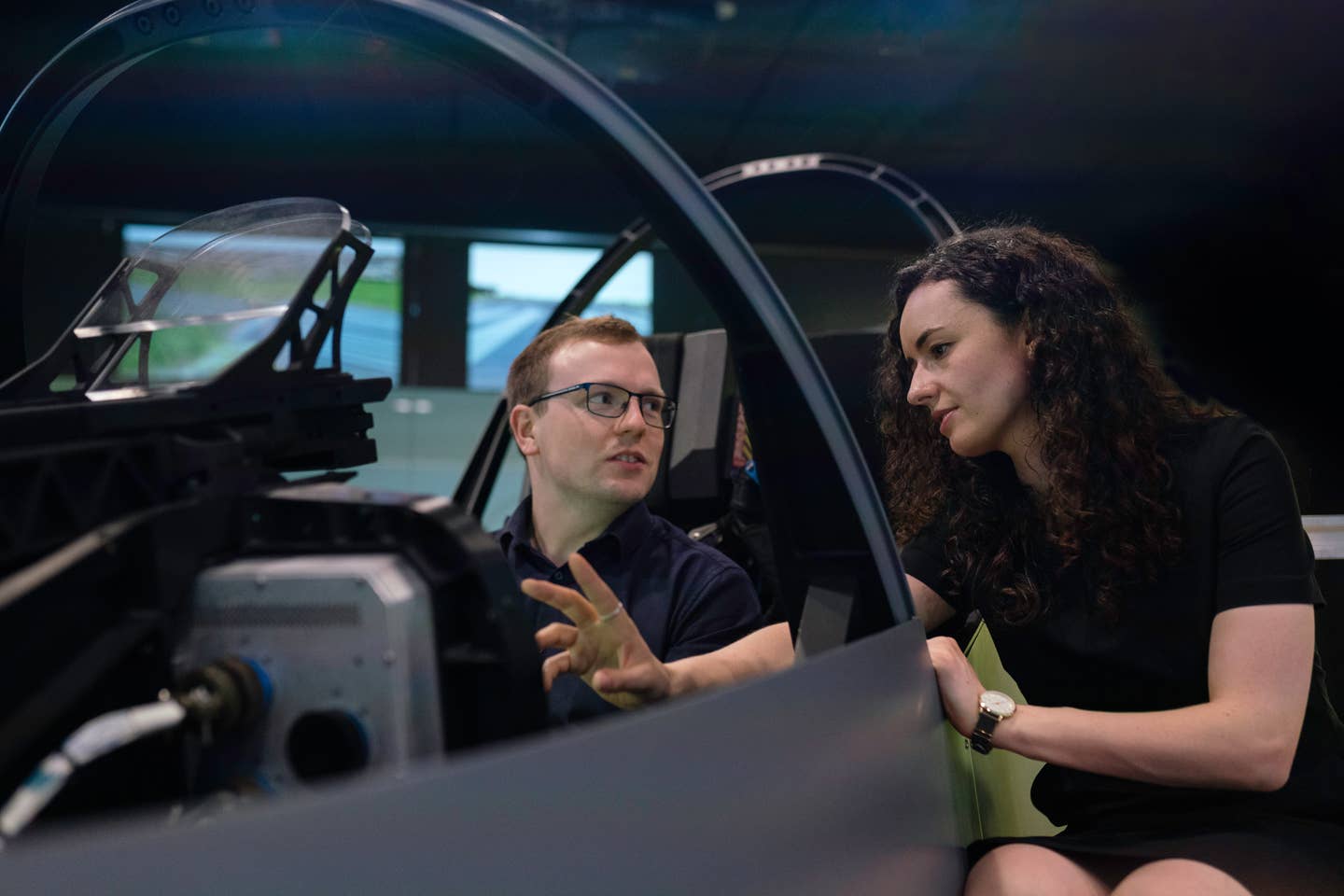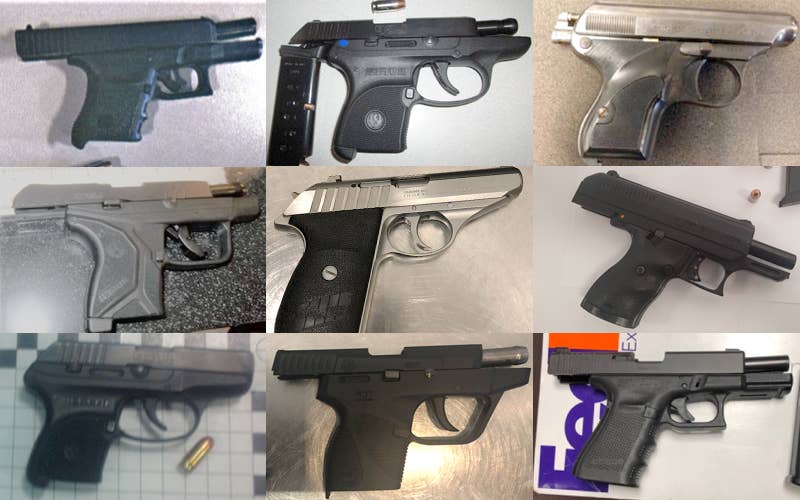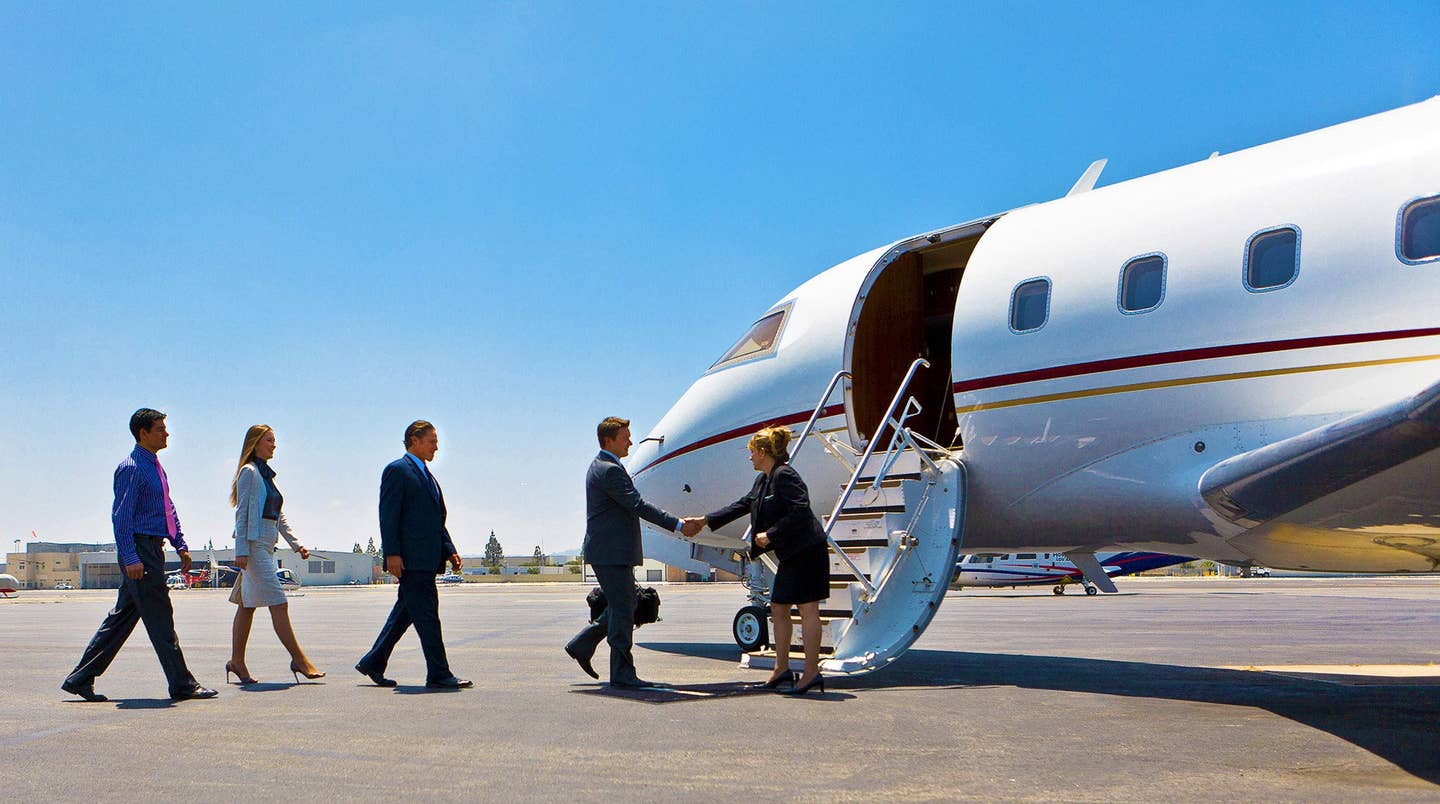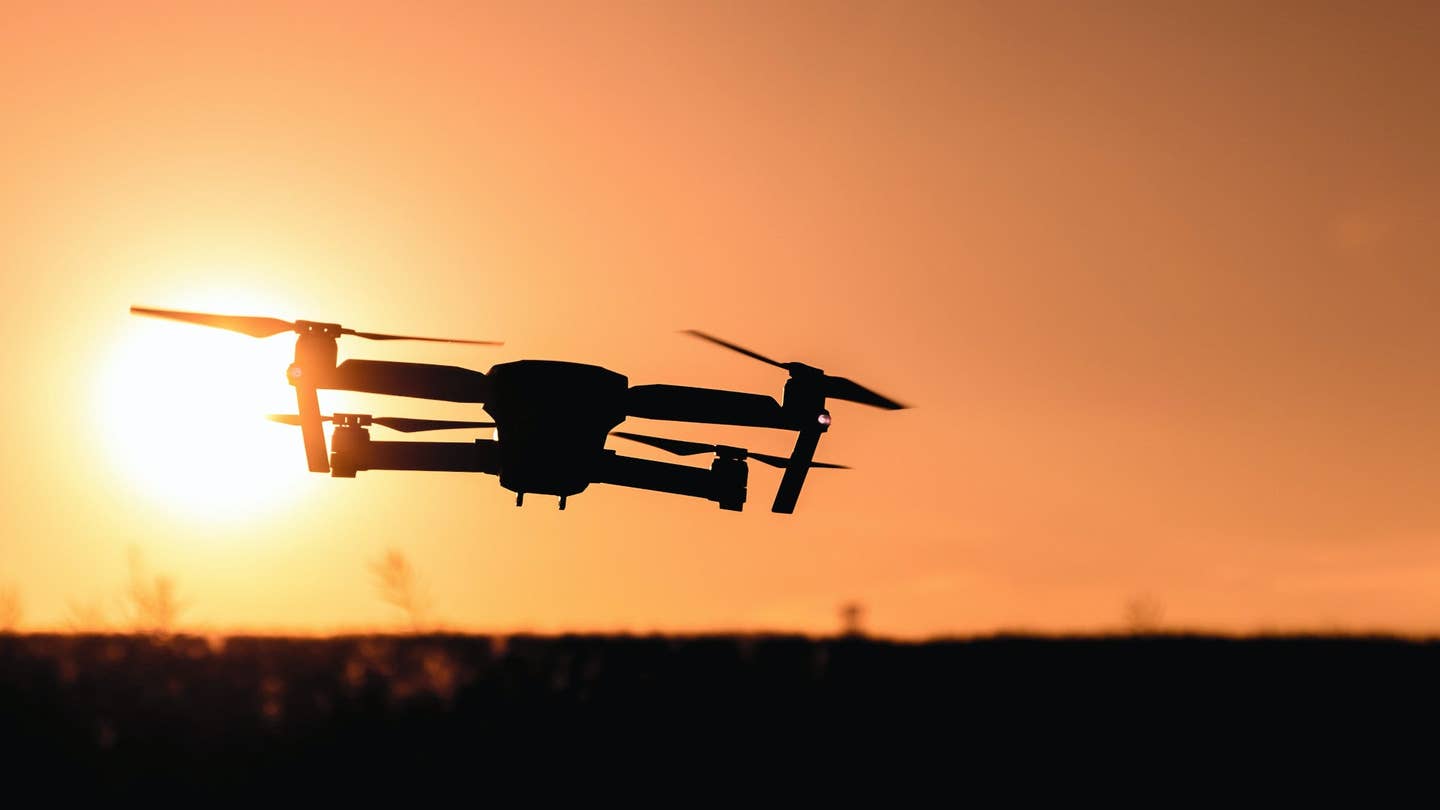
The key to mastering the art of flight is to start by learning all the basic flying maneuvers. [Credit: Unsplash]
What control actually turns your airplane? Aileron? Rudder? The answer may surprise you. Your airplane needs a certain minimum amount of energy, call it airspeed, to lift off the ground and fly. If your airplane has too much energy, it tends to break. The area between the minimum amount of energy to fly and the maximum amount of energy the airplane can structurally withstand, is your airplane's flight envelope.
Everything your airplane does within its flight envelope, it was designed and engineered to do. There are no “random” outcomes from any airworthy airplane being flown within its flight envelope. The pilot may not always agree, especially if that outcome is outside that pilot’s experience level. Take as an example, a spin. Although the airplane has to be stalled before a spin can occur, it is not the stall that causes the spin. (Yet many pilots are afraid of the stall because in their mind it “causes” a spin). It is excessive yaw, during the stall, that causes the spin. So if my airplane is stalled, and I notice my student is holding full rudder and full opposite aileron input, I know the outcome before it happens. Why, because that is exactly what the student is telling the airplane to do: spin! But to my student, the airplane is perhaps “out of control,” because of their limited experience. Remember, your airplane will only respond to the inputs you are making, what you are actually telling the airplane to do (as opposed to what you may think you are telling the airplane to do). Your “mixture” of control inputs all have a very specific and predictable outcome, so there are no surprises. Part of being a student, of course, is to learn exactly what an airplane will do under a variety of flight situations and control inputs.
Two things to mention here.
First, your primary job as the Pilot in Command is to stay within your airplane’s flight envelope. (That's why you are supposed to have a copy of the Operating Limits on board your airplane. What can you do and not break it!) At least then you will know your airplane is controllable, although perhaps not very comfortable (like our spin). Second, pilots overall have a poor understanding of how to actually control their airplane.
Airplane Control
Airplanes respond to the relative wind, which is opposite to the direction of movement of your airplane, and as such are “attitude” independent. Right-side up or upside down, the airplane really does not know the difference. The pilot may not agree, so rather than flying the airplane relative to the ground, it will ultimately be easier, and safer, to internalize the motion of the airplane relative to the pilot sitting in the airplane.
Airplanes are controlled on 3 axes: Pitch, roll and yaw. Those 3 axes intersect at the airplane’s center of gravity. So, if your CG is outside of limits, too far forward, too far aft, too far left or right, your airplane may not be controllable. This is why you are also required to have weight and balance data available on board your airplane. Although calculated simultaneously, “weight” refers to the ability of your airplane to (a) generate enough lift to lift off the ground, and (b) the structural strength of the landing gear, among other structural items. While “balance” refers to intersection of the 3 control axis and consequently the controllability of your airplane.
Elevator
Pitch, your elevator, is a head to foot movement of the nose of your airplane. Regardless of your attitude, the elevator will always, and only, move the nose of the airplane towards the pilots head or towards the pilots feet.
Aileron
Roll, your aileron, is a head to hip movement of the nose of your airplane. Regardless of your attitude, the aileron will always, and only, move the nose of the airplane towards the pilots head or towards the pilots hip.
Rudder
Yaw, your rudder, is an ear to ear movement of the nose of your airplane. Regardless of your attitude, the rudders will always, and only, move the nose of the airplane from the pilots ear to ear..
Coordinated Flight
We are all taught your airplane is coordinated when that inclinometer ball is centered. End of story. Well maybe just the prologue. I think of yaw when I think of coordinated flight. No excessive yaw = coordinated flight. I think in terms of when your airplane is coordinated, both wings are essentially generating the same amount of lift and same amount of drag. When you think of when the airplane is uncoordinated, when the inclinometer ball is not centered, it is typically when you have an excess of pro yaw inputs: rudder, aileron and power. Rudder being your primary yaw control, the adverse yaw generated by the deflected ailerons and the “left-turning” tendencies of maximum thrust (power). From a practical standpoint, this generally means the upwind climb after takeoff and during turns. If nothing else, pay a bit more attention to yaw control, and consequently coordination, during these two flight situations.
Dutch rolls are a great exercise to develop good aileron-rudder coordination. You begin the dutch roll by pointing the nose of your airplane at a distant object. Next you begin to rock the wings by slowly deflecting the ailerons, left and right. What you will see is as you move the stick or control yoke, say, to the left, the nose of the airplane actually moves right, and vice versa. As you move the ailerons one aileron points to the blue sky and the opposing aileron points to the ground. (notice I stayed away from “up” and “down” to include the possibility of aerobatic inverted flight - wow, I already have a headache!) The nose of your airplane will always initially move towards the wing with the aileron pointed towards the ground. It is always the aileron that points towards the ground that generates more drag. This is the adverse yaw. So in order to keep the nose of the airplane from wandering all over the horizon, you must add rudder in the same direction as the aileron. Left aileron, left rudder pressure. Right aileron pressure, right rudder pressure. When you do this, the nose stays on your distant point and, if you were to look at your inclinometer, it is centered. That’s because the ball indicates excessive yaw. Proper aileron rudder coordination means no excessive yaw, so the ball is in the center and your airplane is coordinated. Once you become proficient with straight and level dutch rolls, you can try them climbing, descending and in a turn. If you ever get into an aerobatic airplane, say a Pitts or Extra, and you have an aerobatic instructor, try inverted dutch rolls, weird, but fun!
Turns
The elevator turns the airplane. There, I said it. The elevator is responsible for curved flight and consequently turns the airplane. You first establish the character of the turn, shallow, medium or steep, with coordinated aileron plus rudder input (remember our dutch rolls), then those 2 inputs go neutral and it is the elevator back pressure that drags the nose across the horizon (or elevator forward pressure if you are a crazy aerobatic pilot wanting to do an “outside” negative “G” turn!). You can even do a zero degree bank, 360 degree turn. Aerobatic pilots call it a loop. So, the ailerons do not turn the airplane, they roll the airplane. The rudders do not turn the airplane, they yaw the airplane. It is the elevator back pressure that “moves” the nose around the corner, hence controlling the turn. Understanding this fact will keep you out of trouble. Knowing how to properly turn an airplane will pretty much prevent the dreaded “base to final stall spin” scenario. Yes, you can also think of it in terms of the horizontal and vertical lift components, but it is still your elevator that controls the vertical lift component and curved flight. In aerobatic competition, a “steep” turn is a bank of no less than 60 degrees. Let's break down the elements or “steps.” Step 1: Aileron and rudder “in” the direction you want to turn. Step 2: aileron and rudder “neutral.” Step 3: pull on the elevator to turn your airplane. Step 4: A push on the elevator to stop the turn Step 5: then elevator and rudder opposite to the direction of the turn to level the wings and finally, Step 6: aileron and rudder neutral. Aerobatic pilots call it a “bank and yank turn.”
How every airplane turns.
Let's go back to the turn “characters,” shallow, medium and steep.
In a shallow turn, the wing dihedral (the upward angle of the wings from the horizontal of the airplane's fuselage) is “stronger” than the horizontal component of lift, so if you “let go” of the yoke, the wings will eventually go back to wings level. Generally a bank angle of between 0 - 20 degrees, to maintain a shallow bank turn, we need to add a step 7 in our aforementioned turning “steps.” Step 7: hold slight aileron pressure in the direction of the turn to maintain your shallow bank angle.
In a medium bank turn, 20 - 40 degrees on average, the horizontal component of lift “pulling” you in the turn balances the centrifugal force “pulling” you out of the turn. End result, a balanced turn that requires no additional step 7 aileron input.
Finally, in a steep bank turn, a 40+ degree bank. What happens here is that the “outside” wing in the turn has to travel a longer distance than the “inside” wing. As a result the outside wind travels faster, causing more lift on the outside wind than on the inside wing, causing the airplane to continue rolling towards the low wing. As the bank angle steepens, so does the roll. It continues at an accelerated rate until the pilot tells the airplane to stop. This is called “over banking,” and requires a “step 7” in our turn procedure, holding aileron pressure against the direction of the turn to prevent the over banking tendency.
Remember, you are in control of your airplane. It will only do what you tell it, or allow it to do! If you do not like what it is doing, tell it to stop. Again, many small control inputs “early” are always easier than a “big” control input done later.
4 basic flight maneuvers revisited
Lets review the 4 basic flight maneuvers, including our turn: Straight and Level, Climbs, Descents and of course, Turns.
If we look at the 4 forces that act on our airplane, we see lift opposes weight, and thrust opposes drag. When lift equals weight, the aircraft is in straight and level flight.
If our thrust and/or lift exceeds our drag and/or weight, the airplane will climb. Alternatively, when drag and/or weight exceeds thrust and/or lift, the airplane will descend.
Turns as we have examined, seperates a horizontal component of lift along with a vertical component of lift, to produce a level, climbing or descending turn. It is your elevator that turns the airplane.
From the mastery of these 4 primary flight conditions will flow your true mastery of flight.
Ready To Learn More About Basic Flying Maneuvers?
Learn how to properly turn your airplane, using coordinated aileron and rudder input to establish the character of your turn, then the elevator to actually turn the airplane. The elevator turns your airplane. Remember, your airplane will only respond to the control inputs you make as the PIC. The outcome based on your inputs are both predictable and controllable.
Avoid flying 2 dimensionally and rather internatize the motion of the airplane relative to you its pilot sitting in it. Lots of small control changes made “early” is always better than a big input made “late.” As always, have fun and always look for an opportunity to learn and hone your skills. To get more information about mountain flying and other aviation topics, get your free subscription to FLYING Magazine!

Subscribe to Our Newsletter
Get the latest FLYING stories delivered directly to your inbox






